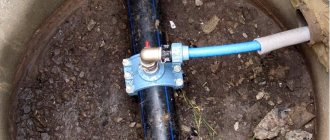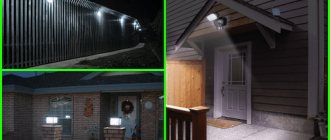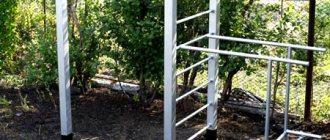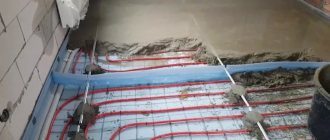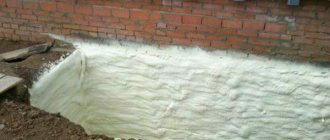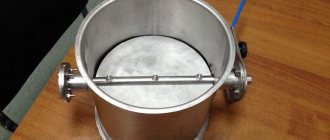And then all that remains is a complete replacement of the pipes, an expensive and troublesome task.
Water pipes laid outside are usually laid in a tray at the bottom of the trench, but sometimes its depth is not sufficient to prevent the pipes from freezing.
In unheated rooms there is also a high probability of freezing. In this case, the question arises: how to insulate water pipes to avoid similar situations in the future?
Requirements for insulating materials
Insulation materials are exposed to precipitation, frost, and other unfavorable factors, and therefore must meet the following requirements:
- durability;
- resistance to weather conditions;
- high heat saving coefficient;
- low thermal conductivity;
- low water absorption coefficient;
- fire properties for indoor use;
- ease of use and the possibility of repeated installation;
- low cost.
How do you insulate a chimney?
You can reduce heat loss from a chimney using any type of material. For work, fibrous types of insulation, mineral wool or broken brick are most often chosen. Insulating a chimney pipe requires certain knowledge. Particular attention must be paid to the composition of the protective layer.
It is prohibited to select flammable types of coatings and combustible textures. Prolonged heating of the surface can cause a fire.
To ensure that the insulation process does not cause difficulties during the work, it is recommended to choose structures that will fit on top of each other. The length of the elements should not exceed 50 cm.
The insulation is pre-positioned in the casing area. After this, the following elements are put on it. Thus, the structure is insulated to the highest point. The joints are treated with cement mortar.
To protect metal pipes, special structures are used, inside of which there is a layer of insulation. The outer shell is made of galvanized steel. As a result, the structure will consist of several pipes of different diameters.
Types of insulation
The modern building materials market has a large selection of materials for insulating ventilation and water pipes and offers the opportunity to decide how to insulate water pipes in accordance with your situation.
The most convenient and common materials today are:
- The most famous roll insulation used for insulating any surfaces is glass wool. This material meets all the above requirements, and also: has a convenient form - a roll, which allows it to be used for insulating pipe bends, fittings, taps; has low cost.
- Thermal insulating basalt cylinders (or shells) made of high-density microcrystalline basalt fiber.
When insulating water pipes at your dacha or at home, you can select basalt cylinders of various parameters:
- the length of the pieces is 1 lm;
- internal diameter 34-324 mm and thickness 30-80 mm;
- may have a coating of aluminum foil, which increases the wear resistance of the insulation;
- To insulate the water pipe elbows, ready-made segments are used or the cylinder is cut into segments of the required size.
This material also meets all necessary requirements. However, its cost is higher in comparison with glass wool.
Expanded polystyrene (foam) shells are very common when the question arises of how to insulate a water pipe.
This material fully satisfies all the requirements for insulation and can be used with or without an external coating. Shaped shells are selected individually for rotation angles or pipe nodes.
Extruded polystyrene foam
Extruded polystyrene foam, unlike regular polystyrene foam, is a high-density foam mass with closed cells.
This structure allows the use of this material in wet soils.
Shells made from extruded polystyrene foam consist of separate segments. Their number depends on the diameter of the pipe being insulated. To connect individual parts of the shell, a tongue-and-groove lock is used.
Expanded polystyrene has sufficient strength that allows it to be used for channelless underground installation.
To secure the mounted segments, polymer or metal tapes, wire or mounting tape are used.
Installation of shells made of basalt or expanded polystyrene
Insulation for water pipes made of basalt or expanded polystyrene is installed using the following technology:
Advice! It is best to start installation from the flange connection.
- shell halves of the corresponding internal diameter are placed on the pipe, with an overlap of 10-20 cm relative to each other required;
- preliminary fastening can be done with tape;
- in places of pipe outlets, specially selected segments or segments cut from straight sections of the shell are used;
- for thermal insulation of street areas, roofing felt or foil insulation can be used as a protective material;
- final fastening to the pipe is carried out using the tightening method;
- If dismantling is necessary, it is carried out in the reverse order.
What methods are provided for insulating metal and plastic structures?
These include:
Use of special boxes. They will contain a pipeline of pipes with further insulation. Slabs will be laid on top of such structures. As a result of leaks, this method will reduce the installation time.
Application of thermal insulation materials. This type is widely used for insulating heating pipes on the street. Thanks to this, it is possible to avoid heat loss and prevent the formation of condensation on the surface of metal elements. To do this, use glass wool, which is covered with a thick layer of polyethylene.
Using segment blocks. They are a blank of long cylinders. This shell for pipe insulation is very popular in industrial enterprises. This type of insulation saves time and financial costs for this procedure. The surface of such a heat-insulating layer is made of dense plastic, foam or polystyrene.
Treatment with liquid heat insulators. This method is recommended for small areas. Professionals can work with such compounds. When applying, it is necessary to take into account the thickness of the applied layer.
Pipe heating with cable
An additional measure of protection against freezing of the water supply system under very harsh conditions can be insulation of the water supply system by heating the pipe with a cable. This method of pipe insulation consists of passing an electrical cable under a heat-insulating shell.
On the most severe winter days, the cable is connected to the power supply and prevents the pipeline from freezing. If you turn on the cable only on the days of the lowest temperatures, this method will help you survive more than one winter without problems, while saving energy consumption and extending the life of the cable itself.
Thanks to the multi-layer protective sheath, the cable can be laid both outside and inside the water supply system.
For proper and economical operation of the entire system, it is necessary to install a relay that disconnects the cable. Some self-regulating cables often do not live up to their name and do not disconnect from the power supply in a timely manner, creating waste of electricity.
The installation steps are as follows:
- we choose the cable with the highest number of possible disconnections and inclusions;
- we stretch the cable along the entire section of the pipe that needs additional heating;
- you can also wrap the cable around the pipe;
- to correctly calculate the time for switching on the relay, you need to know the temperature of the water in the well during the peak of cold weather;
- we connect the relay to the system and set the required temperature indicators on it;
- the relay turns on the cable when the temperature is two to three degrees lower than that measured in the well and turns off when the temperatures of the pipe and water in the well are equal;
Note! The relay must be installed on the opposite side from the cable placement, otherwise the temperature data will have distorted values.
- carefully insulate the entire structure;
- you can turn on the power.
We have studied various options for insulating water pipes. For information on insulating other types of pipes, see how to insulate a chimney pipe. Reliable protection of your pipeline in winter cold will save it from freezing and protect your home from accidents.
Source: o-trubah.ru/zashhita-ot-promerzaniya-i-otogrev/utepleniye/kak-uteplit-vodoprovodnuyu-trubu-17
Underground
The pipe is wrapped in basalt and secured with tape. A protective layer must be placed on top. Roofing felt (or any durable waterproofing material) is ideal for this.
The foam parts are connected to the pipe using special joints cut along the edges. Additional fixation is provided by adhesive tape glued with waterproof glue. A protective layer is also applied on top.
A heating cable is considered the most reliable heating method. Although it is the most expensive, it is suitable even at a depth of 2 meters for seasonal living. It does not require deep trenches (if you live permanently), 50 cm is enough.
The cable must be wrapped around the pipe every 10 cm. After 15 cm, it is fixed with adhesive tape. The top must be covered with insulating material. Some craftsmen suggest placing it inside the pipe, but this is somewhat more difficult to do.
Additionally, temperature sensors are installed. There are 3-4 sensors located along the entire length. Their installation will provide the opportunity to set up automatic heating or manual control.
Such a heating system will provide a continuous flow of water into the house even on the coldest days, and will never fail. The cable sells for an average of 500 rubles per meter. Consumes only 10, maximum 20 W. These costs are justified if the water supply in your area is not too long.
Being under strong pressure, water cannot freeze. Therefore, this method has gained popularity among craftsmen. Installation is carried out from the receiver, we connect the valve to the pump. We check the system: close the tap and start the pump.
In apartments, of course, this method is not used. Only in areas with a well or borehole. And only in case of seasonal residence of the owners of the house. In winter there should be no one in it. Although this method allows you to save on insulation of the water supply system, it is not always appropriate.
Air insulation, mentioned above, requires the creation of special conditions for the water supply. With this method, water pipes are placed in other plastic pipes (for communications) of larger diameter, thus creating a kind of air cushion. Cold air does not reach the water flow from above, and from below the system absorbs the heat of the earth. For this method of insulation, which involves insulating material and additional pipes, it is necessary to dig a trench of at least 1 meter.
However, having chosen this method, you should remember that such a water flow will be difficult to reconstruct if necessary. The method is certainly interesting, effective, and inexpensive. But you may have to pay twice.
How to insulate a water pipe: insulation options
To prevent water from freezing in the pipeline during cold times, before insulating a water pipe, you need to carefully consider the technology of thermal insulation, taking into account a number of factors.
When installing a pipeline for year-round use, it is laid below the soil freezing mark, where the stable temperature is always close to +50C. But in some cases, the freezing depth is 2 meters, which makes thermal insulation of the water supply using this method very labor-intensive.
However, there are alternative ways to insulate water pipes, avoiding laying communications at great depths. You will learn about them from our article.
How to find out the temperature of the coolant in the batteries
When doubts arise about the quality of the heating services provided, and the inhabitants of the apartment simply begin to freeze, measures should be taken to determine the cause. To do this, measure the temperature:
- air in the room;
- pipes;
- batteries;
- coolant - water in the heating system.
The data obtained will help you understand whether the room is really unreasonably cold or whether it is just a subjective feeling.
It must be taken into account that independent measurements of heating indicators are not direct evidence of violation of standards. However, they can serve as a basis for filing a complaint and inviting representatives of the service organization for control measurements
Determining the water temperature in the central system
It should be noted that reliably measuring the temperature of the coolant in a central heating system is not so easy. The most accurate indicator remains only the air temperature in the room. However, you can do the following:
- Open the tap if it is installed on the radiator in the apartment.
- Place a container under it, after placing a thermometer there.
- Collect water.
- Wait for the final thermometer reading.
This indicator must comply with the described standards, but upward deviation from them is also allowed. The maximum temperature deviation is up to 4 °C.
In addition, if air is detected in the heating system of the apartment, you should contact the service organization.
Determining hot water indicators
There is another way to establish the truth, related to the fact that the temperature of the heating batteries in the apartment and the hot water supply are directly related. Therefore, it is advisable to measure the water degree like this:
- Open the hot tap.
- Wait 3 minutes for the water to heat up to maximum.
- Take a container and place it under the stream without closing the tap.
- Place the thermometer in the center of the container.
- Wait for the final readings from the device to be received.
If the device shows a number from 60 to 75 °C, everything is normal with the coolant. If the temperature data is lower, it is possible that the water in the heating system is not heated enough.
Thermal insulation of a pipeline by creating high pressure in it
One of the options for insulating water supply pipes in a country house or in a private house is to create and maintain high pressure in them. The effectiveness of this method is due to the quality of the water, being under high pressure, it does not freeze.
Creating high pressure in the pipeline:
- A small receiver is cut into the water supply, with the help of which a pressure of 3-5 atmospheres will be created.
- When applying this method, submersible pumps are used that can pump up a pressure of 5-7 atmospheres. Next, after this pump:
- a check valve is being installed;
- the tap in front of the receiver is closed;
- the pump turns on.
The created pressure must be maintained in the water supply during the period of time when it is not in use. When the pipeline needs to be brought back into operation, the air is simply bled from the pipes.
Thermal insulation for water supply pipes
It is not difficult to get confused in the wide range of thermal insulation materials. To choose the best option, you need, at a minimum, to know the main types and types, key characteristics and features.
Thermal insulation of water pipes is carried out with various insulation materials, which are grouped below (in the form of a classification) according to the principle of unity of insulation technology.
Rigid insulation
This category includes polystyrene foam, polystyrene foam (2560-3200 rubles/cube) and Penoplex (3500-5000 rubles/cube), thermal insulation properties and price depend on density.
Laying water pipes in a foam box
Roll insulation
This segment includes: polyethylene (as an additional material), foil penofol (50-56 rubles/sq.m.), mineral wool (70-75 rubles/sq.m.) and glass wool (110-125 rubles/sq.m.) ), furniture foam rubber (250-850 rubles/sq.m. depending on thickness).
Insulating water supply pipes with rolled thermal insulation is also fraught with difficulties, which lie in the hygroscopicity of the material. Those. insulation loses its properties when exposed to moisture, which means it has a narrower scope of application, or needs additional protection. Plus, you need to think about how to attach the insulation to the pipe.
Basalt heat-insulating mats and foam rubber for insulation of water pipes
Segmental (shell) insulation
Pipe insulation casing is the most progressive option for pipeline thermal insulation. The shell for insulating the water pipe ensures maximum tightness and, as a result, creates a reliable thermal insulation layer.
There are types of segmental insulation:
Polystyrene foam shells for insulating water pipes are rigid (thermal insulating casing for pipes is a shell made of polystyrene foam (PPU) or foam plastic. Price from 190 rubles/m.p., depends on the thickness and diameter of the cylinder);
Sprayed insulation (PPU)
The peculiarity of insulation by spraying polyurethane foam is that thermal insulation is applied to the surface of the pipe, ensuring 100% tightness (the cost of components for polyurethane foam filling starts from 3.5 euros per kg).
The number of components is determined by the thickness of the fill; work is paid additionally). On average, the cost of insulation with sprayed polyurethane foam is 15-20 dollars/m.p.
Sprayed insulation also includes heat-insulating paint for pipes. You can apply it yourself, because... Thermal paint is sold in aerosol cans.
A layer of paint of 20 mm. replaces 50 mm of basalt wool insulation. In addition, this is the only material that is not susceptible to damage from rodents.
Insulation of water pipes by spraying polyurethane foam (PPU) Water pipe insulated with polyurethane foam (PPU)
When choosing thermal insulation material for insulating water supply pipes, you need to take into account the following factors:
pipeline installation location
Insulation of pipes laid on the ground and located underground is carried out in different ways, even when using the same materials (it is also important to take into account whether the pipes are laid before or below the freezing level); frequency of pipeline operation. For example, in a country house that is not intended for permanent residence, it is enough to simply avoid a pipe rupture
To do this, a receiver is installed or the water supply is insulated with a cable. But in a private house it is necessary to ensure a year-round water supply. Here you need to approach the choice of insulation more carefully; thermal conductivity indicator of pipes (plastic, metal); resistance to moisture, combustion, biological activity, ultraviolet radiation, etc. determines the need to protect the insulation from these factors; ease of installation; price; life time.
Insulation of a water pipeline by heating it with cable
Another method to obtain insulated water supply pipes is to heat them with a cable. To do this, the pipeline is wrapped with a heating cable. This measure makes it possible to lay communications at a depth of 0.5 instead of 2 meters. The distribution power of the heating cable per linear meter is 10-20 W, and its price ranges around $15 per meter.
It is also necessary to take into account the possibility of placing the heating cable both outside the pipe and in the middle of it. Such installation options allow you to avoid freezing of the pipeline at the point of its entry into the building.
This place has always presented the greatest danger of freezing, and by laying a few meters of cable inside the pipe, you can get rid of this problem forever.
Insulation of pipelines according to SNiP
When carrying out work on equipment and installation of pipelines, it is necessary to comply with SNiP standards.
What is SNiP? These are building codes and rules for organizing construction production, compliance with standards, technical specifications and departmental regulations.
Basic norms and rules for thermal insulation
Heating networks are one of the main elements of centralized heating supply. You should strictly adhere to the rules and regulations when drawing up a pipeline thermal insulation project.
Subject to compliance with SNiP, thermal insulation of pipelines will be carried out efficiently without violating standards.
Thermal insulation of pipelines SNiP is provided for linear sections of pipelines, heating networks, compensators and pipe supports.
Insulation of pipelines in residential buildings and industrial buildings requires strict compliance with design standards and fire safety systems.
The quality of materials must comply with SNiP, thermal insulation of pipelines should be aimed at reducing heat loss.
The main tasks of thermal insulation, features of the choice of materials
The main purpose of thermal insulation is to reduce heat loss in heating systems or hot water pipelines. The main function of insulation is aimed at preventing condensation.
Condensation can form both on the surface of the pipe and in the insulating layer.
In addition, according to safety standards, the insulation of pipelines must ensure a certain temperature on the insulation surface, and in case of stagnation of water, protect it from freezing and icing in the winter.
Insulation of pipelines also increases the service life of pipes.
According to SNiP standards, thermal insulation of pipelines is used both for centralized heating and reduces heat loss from intra-house heating networks. What to consider when choosing thermal insulation:
- Pipe diameter. It depends on what type of insulator will be used. Pipes can be cylindrical, half-cylinders or soft mats in rolls. Insulation of small diameter pipes is mainly carried out using cylinders and half-cylinders.
- Coolant temperature.
- Conditions in which the pipes will be operated.
Types of insulation
Let's consider the most popular and frequently used materials for thermal insulation:
- Fiberglass. Glass fiber materials are often used for above-ground piping because they have a long service life. Fiberglass has a low application temperature and is characterized by low density. High-quality fiberglass has high vibration, chemical and biological resistance.
- Mineral wool. Insulation of pipelines with mineral wool is a very effective heat insulator. This insulating material is used in different conditions. Unlike fiberglass, which has a low application temperature (up to 180ºC), mineral wool can withstand temperatures up to 650ºC. At the same time, its heat-insulating and mechanical properties are preserved. Mineral wool does not lose its shape and is highly resistant to chemicals and acid. This material is non-toxic and has a low degree of moisture absorption.
In turn, mineral wool comes in two forms: stone and glass.
Insulation of pipelines using mineral wool is used mainly in residential buildings, public and domestic premises, as well as to protect surfaces that are subject to heating.
- Polyurethane foam has a wide range of applications, but is a fairly expensive material. According to SNiP standards, thermal insulation of pipelines is environmentally friendly and does not affect human health. Polyurethane foam is resistant to external factors, non-toxic and quite durable.
- Expanded polystyrene. In some areas of industry, foam plastic is an indispensable material, as it has low thermal conductivity and moisture absorption and a long service life. Expanded polystyrene is difficult to ignite and is an excellent sound insulator.
- In addition to the above materials, pipeline insulation can be carried out using other less well-known, but no less practical insulation materials, such as foam glass and penoizol. These materials are durable, safe and are close relatives of polystyrene foam.
Thermal insulating paint can also provide protection against corrosion and high thermal insulation of pipes.
This is a relatively new material, the main advantage of which is that it penetrates into hard-to-reach places and is able to withstand high temperature changes.
Thermal insulation of water pipes with air
In winter, the ground freezes from top to bottom - cold comes from above, and heat continuously comes from below (up to +50C). When insulating water pipes, putting pipe-shaped thermal insulation on them creates insulation on all sides.
However, the pipe could be heated by heat from below. In this regard, it is recommended to arrange thermal insulation that will resemble an umbrella from the cold coming from above. The plumbing laid in this way allows the heat from below to warm it unhindered.
Another important aspect is to lay one pipe in the middle of another, and not just lay the water pipe. Sewer pipes made of propylene have a low cost, and pulling a water pipe through them provides a number of advantages:
- In the event of an emergency, you can quickly run an emergency hose through this manifold. To do this, it is enough to lay a wire or cable in the pipe in advance.
- Possibility of replacing a water pipe without excavation work.
- Guaranteed heating of the pipeline under any conditions. Cables can fail, but here it is enough to supply warm air to the collector - and the frozen pipeline will thaw.
- Possibility of heating water pipes with earth's heat. If the house has a basement or cellar (where the temperature is always positive) where the water supply runs, then it is necessary to install an exhaust pipe equipped with a suction deflector at its other end. Warm air from the basement will constantly flow into the collector, insulating the water pipes in the ground. The result will be not only free and reliable heating of the pipeline, but also ventilation of the basement.
Instructions for installing a heating cable for underground pipe installation
When installing a single-core wire, it should be taken into account that in order to be able to connect it, it must go through the pipeline and then return back. This way you will have two ends that can be connected to a power source.
Work should be carried out in the following sequence:
- lay the cable along the pipe from beginning to end, temporarily securing it with tape;
- move the cable to the opposite side of the pipeline and pull it in the opposite direction;
- stick foil tape over both threads, which will ensure complete fixation of the wire and reflection of the heat flow towards the pipe;
- install the selected insulation throughout the water supply;
Spiral laying of heating cable.
- wrap the surface with waterproofing plumber's tape or waterproof the surface in another reliable way.
Before laying the pipe in the ground, it is necessary to test the installed heating system. To do this, connect the cable to the power source and make sure that heating occurs at the visible end sections.
Insulation of water pipes inside a building
When it is necessary to thermally insulate pipes indoors, polystyrene foam, fiberglass or basalt materials are used for this. All of them heat the system due to the ability to accumulate air inside.
Expanded polystyrene
Expanded polystyrene is the most common insulation for water pipes. It can be used not only for thermal insulation inside a building, but also for underground external insulation.
Expanded polystyrene is produced in the form of insulating shells made of two semicircles. On top of this insulation is covered with a protective layer, which is attached at the junction of the shells.
Fiberglass materials
Fiberglass materials are usually used for insulating metal-plastic pipes. The need to use additional means such as roofing felt or fiberglass due to the low density of glass wool leads to significant financial costs when using them.
Basalt materials
Insulation for water pipes made of basalt can be used without trays. Due to their cylindrical shape, such materials are easy to install. The protective layer is made of roofing felt, foil insulation, glassine. The only drawback of basalt insulation is its high cost.
Near the water supply of a private house, dangerous places for freezing are unheated rooms and the street. It is quite simple to insulate communications inside, but outside it is often necessary to take into account different components of the system - exits to pumps, meters and other important components.
Now you know how to properly insulate the water supply both outdoors and indoors, and we hope that you will easily cope with the task.
Source: vse-o-trubah.ru/kak-uteplit-vodoprovodnuyu-trubu.html
Thermal insulation materials for underground water supply and their features
In the construction industry, a variety of insulation materials are used, which are produced in rolls or sheets; it is clear that shells shaped like their surface are better suited for insulating pipes. Almost all materials used for thermal insulation are produced in the form of pipe shells, some of them have built-in channels for laying electric heating cables.
Foam pipe casing
Styrofoam
Expanded polystyrene EPS (foam plastic), due to its physical parameters and rigidity, is the most suitable option for thermal insulation of underground pipelines; its distinctive qualities are:
- One of the lowest thermal conductivity coefficients with an average value of about 0.04 W/m °C.
- High rigidity (depending on the brand) makes the material indispensable when used in environments with high loads on the shell; its density reaches 50 kg/m3.
- Polystyrene foam does not transmit or absorb water; water absorption depends on the density of the material and on average does not exceed 2%.
- Low cost, thanks to which polystyrene foam is available to a wide range of consumers.
- The service life of a foam shell underground is up to 40 years.
- The temperature range for using polystyrene foam is from -50 to +70 °C.
- Expanded polystyrene is resistant to chemical and biological effects of the underground environment, does not decompose under the influence of mold, bacteria, microbes and other microorganisms.
- The foam shell is lightweight and can be easily installed by one person in a short time without additional assistance.
An analogue of expanded polystyrene is the extruded variety (Orange Penoplex), which has higher strength characteristics, density, low water absorption of about 0.2% and thermal conductivity of about 0.3 W/m °C. Shells for thermal insulation of pipelines are also made from extruded polystyrene foam; it costs a little more than regular polystyrene foam.
Pipe polyurethane foam
Polyurethane foam
PPU polyurethane foam is the leader among all insulation materials in terms of thermal conductivity; thanks to this quality, it is widely used in the industrial production of insulated pipes with a zinc or polymer outer shell. The construction market offers polyurethane foam shells of various diameters and their characteristic features:
- Higher price compared to foam.
- Thermal conductivity coefficient is 0.025 W/m°C.
- Temperature range of use from -160 to +150 °C.
- Polyurethane foam has high rigidity and strength, its density reaches 250 kg/m3.
- The material is resistant to chemical and biological influences, does not allow water to pass through, its water absorption is 1 - 2%.
Polyethylene foam
Shells and foamed polyethylene PPE (Penoplex, Energoflex) are widely used for thermal insulation of external pipelines in individual houses; they can be used outdoors to seal open sections of pipes located in a caisson well or entering a house on stilts.
Polyethylene foam tubes
Due to their low rigidity, polyethylene foam tubes crumple when used underground without a hard shell and, due to a decrease in thickness, significantly lose their heat-insulating qualities, the main parameters of polyethylene foam:
- Thermal conductivity 0.31 - 0.55 W/m °C (depending on the brand, the figure is lower for products made using cross-linking technology).
- Temperature range -60 - +75 °C.
- Density from 25 to 100 kg/m3.
- Polyethylene foam does not allow moisture to pass through or absorb moisture, its water absorption coefficient does not exceed 1%.
Mineral wool
Insulation materials made from glass and basalt wool are widely popular among consumers due to their affordability and environmental friendliness, allowing their use inside residential premises. Glass wool has low rigidity and easily wrinkles, basalt-based material is stiffer, but due to the main disadvantage - high moisture absorption, shells made of quartz and basalt are not laid underground. Like other soft materials, mineral wool is used to insulate external water supply in coffered wells and supply points to the house.
Mineral wool shells
Mineral wool has the following characteristics:
- Thermal conductivity coefficient is 0.033 - 0.05 W/m °C.
- Water absorption is about 10%.
- Temperature range from -60 to +450 °C for glass wool and -100 - +700 °C for basalt (depending on manufacturing technology).
- Density 30 - 225 kg/m3.
- Mineral wool is resistant to most chemicals, non-flammable and does not support combustion.
- The cost of mineral wool is 2 times higher than that of expanded polystyrene.
Thermal insulation paints
This type of heat insulator is classified as a high-tech product; the acrylic-based paint contains perlite, foam glass particles, quartz fibers and microscopic granules containing a vacuum inside the shell. Thermal paint is applied to the surface to be treated with a brush or spray in several layers up to 4 mm thick; it is mainly used for treating surface pipelines and containers in the national economy; in everyday life, the use of this product is not economically feasible due to its high cost.
Application of heat-insulating paints
In addition, many experts are not confident in the veracity of the information provided by the manufacturer about the thermal conductivity of paint below that of air (0.0012 W/m °K versus 0.022 - 0.025 W/m °K), and indicate other data in independent calculations - 0. 07 W/(m·°K.) - this is lower than the values of any of the standard heat insulators.
Sprayed heat insulators
In industry, liquid polyurethane or polystyrene is often sprayed onto insulated surfaces, the two components are mixed and the composition is applied to the pipe shell with a spray gun. After spraying, the substance increases in volume and provides reliable thermal insulation of the object without cold bridges with high tightness.
Due to its high cost, the technology is rarely used in everyday life by individual homeowners, but theoretically, this installation can be used to coat HDPE pipes if you agree on a price with its owners.
Spraying polyurethane foam
How to reliably insulate a water pipe outdoors
Having a water supply in the courtyard of a private house or in a country house, with the arrival of winter the owner has to think about maintaining the functionality of this utility service. If the measures taken during installation to insulate the water pipe were not enough, the water frozen inside will easily break it.
And then the homeowner will be forced to replace it, which is associated with great hassle and considerable financial expenses. After all, a pipe (both plastic and steel) can simply burst.
Which insulation to choose for sewerage?
The key to reliability and saving money is the correct choice of heat-insulating material to protect the sewer network. To do this, it is recommended to use the following list:
Foam shell. It is a hollow cylinder consisting of two equal parts. To insulate it, just wrap it around the pipe. For fixation, you can use construction tape or a plastic clamp;
Penoplex. The material is slightly denser than foam. It consists of two parts of a hollow cylinder which, like a foam shell, is attached with adhesive tape. The photo of pipe insulation shows the process of fixing the heat-insulating layer.
These types of finishing materials are distinguished by their affordable cost. When choosing, it is necessary to take into account the diameter of the pipe and the density of the plastic.
Requirements for insulation for water pipes
Today you can find quite a few types of water pipe insulation on the market. However, before purchasing a specific sample, you need to find out whether it will meet the intended operating conditions.
After all, the highway can be laid simply on the street or in a closed way in the ground. And this factor largely influences the right choice. But in any case, the insulation must meet the following requirements:
- low thermal conductivity;
- resistance to negative weather conditions;
- low water absorption;
- fire properties;
- high heat saving;
- possibility of repeated installation and ease of use;
- low cost;
- durability;
- Possibility of DIY installation.
When choosing an option for insulating water pipes, give preference to a material that meets the totality of the above requirements. Then during the winter you will not have to solve problems with this engineering communication.
What can be used
In principle, any material listed below can be used to insulate water pipes. But the choice should fall on the one that is most suitable for specific conditions. It may not meet absolutely all the requirements listed above, and this is not always necessary.
Mineral wool and foamed polyethylene
One of the options that has been used for quite a long time and is constantly being improved is mineral wool. There are several varieties of it. Glass wool is made from glass, about 35% (usually recycled glass containers, etc.), soda ash, sand and other additives. Therefore, it can be called quite environmentally friendly. Its positive aspects are:
- minimal thermal conductivity;
- ease of installation;
- light weight;
- ease of transportation;
- not food for rodents;
- protection from noise exposure.
The disadvantages include:
- poor resistance to moisture, which leads to loss of thermal insulation properties;
- the need to use personal protective equipment during installation;
- the fiber is easily damaged and breaks with little force applied;
- shrinkage may occur over time;
- instability to fire.
Basalt wool
A peculiar subspecies is basalt wool. It is made from crushed stone. In addition to all the advantages listed above, we can highlight resistance to high temperatures, as well as immunity to moisture.
Foam rubber
Foamed rubber is a synthetic product that appeared on the market not so long ago. It was developed specifically for insulating pipelines indoors and outdoors. Its characteristics:
- high elasticity;
- resistance to high temperatures;
- moisture resistance;
- ease of installation;
- vapor tightness;
- self-extinguishing when exposed to an open flame.
If we talk about the disadvantages, then this is most likely only the difficulty of delivery, because it takes up a fairly large volume and is light in weight.
Insulation for polyethylene foam pipes
Polyethylene foam is often used as a substrate for various floorings. But some of its types are designed specifically for pipeline insulation. The choice of masters falls on him because he:
- does not support the development of bacteria and fungi, which is very important for a humid environment;
- easy to install;
- has low weight;
- UV resistant;
- fireproof;
- does not require special installation skills.
With prolonged use, the material may shrink to a certain extent, which reduces its original performance. In addition, certain problems arise when sealing seams. It is very difficult to achieve a perfect fit in some cases.
Expanded polystyrene
Penoplex and expanded polystyrene have many similar properties. They are derivatives of the polymer component. This means that they practically do not interact with organic matter. These materials:
- are easy to install;
- are light in weight;
- have zero heat capacity;
- resistant to moisture;
- characterized by compressive strength.
At the same time, the products are very unstable to open fire. Rodents love to damage such insulation materials.
Foamed polyurethane
Polyurethane foam shells are products in the form of semicircles, which are put on like a cover on a pipe. Usually it is covered with a protective layer of waterproofing on top. They use it relying on:
- ease of selection for a specific diameter;
- lack of thermal conductivity;
- light weight;
- assembly in the form of a constructor;
- possibility of repeated use;
- the possibility of carrying out insulation work even in winter.
The downsides are: sufficient transportation costs, as well as a maximum temperature limit of 120°C.
Warming paint
A relatively new, but quite interesting development is insulation using special paint. Even a small layer of it has good insulating properties. If it is increased several times, then losses will be significantly reduced. This product:
- easy to apply on surfaces of any shape;
- has excellent adhesion to metal;
- not affected by salts;
- endowed with anti-corrosion properties;
- eliminates the formation of condensation;
- does not place additional load on the pipes;
- after coating, all valves or inspection units remain freely accessible;
- ease of repair;
- high temperature resistance.
Among the negative aspects, one can highlight the need for additional insulation in case of severe freezing of the soil or the external location of water supply pipes.
Types of insulation for water pipes in the ground and on the street
A wide range is what characterizes this segment of the building materials market. Based on this, you will probably be able to decide how to insulate a water pipe on the street or in the ground. Intense competition plays into the hands of consumers: manufacturers are forced to expand their product range.
The following materials are used as thermal insulation for water pipes in the ground and outdoors:
- glass wool With its help you can insulate surfaces of any type;
- heat-insulating basalt shells (cylinders). To insulate water pipes in a private home, you can select products of various designs, including those coated with aluminum foil, which increases the wear resistance of the insulation;
- foam (polystyrene foam) shells. Using these products is a better solution to the problem than insulating an outdoor water pipe with your own hands;
- synthetic rubber. This material is non-toxic and is suitable for insulating water pipes in a country house or private house. After wrapping the elements of the water supply system, the seams are glued together.
As for glass wool, this material is considered harmful, and therefore is now used much less frequently than before. But if you decide to save money, then do not forget about precautions when working with it.
Helpful information! To insulate pipeline elbows, shell cylinders are cut into segments of the required size or ready-made segments are used.
Drinking HDPE pipe
It is made of polyethylene, the compounds of which are formed in a pressure chamber with a vacuum, into which argon with raw materials is supplied. Hence the name “ Low Pressure Polyethylene”
“, but, despite the specificity of the name,
the HDPE pipe
can withstand pressure from 10 to 100 atm.
HDPE pipe contains up to 70%-80% polyethylene, due to this it is rigid and has temperature restrictions, only 70 degrees Celsius. As a result, such a limitation naturally allows the pipe to be used only for supplying cold water with a temperature not exceeding 30 degrees Celsius. However, despite the narrow range of its characteristics, this type of water supply is widely used to supply water to a house from a well. It is used for water supply in the country. Of course, due to the specificity of the material, such a pipe is afraid of ultraviolet radiation - the structure of the molecular bonds of the material begins to gradually deteriorate. Such a minus shortens the service life of the pipe and can lead to a pipe break in this place. Therefore, on the street, such a pipe is laid in the ground or in special channels where there is no access to sunlight. The service life of such a pipe is guaranteed to be up to 50 years, but when using such a pipe in open sunlight, the service life is reduced to 15-20 years. The advantages include ease of installation
and
strength of fitting connections
, as well as frost resistance of the pipe.
For example, if you forgot to drain the water from the system at the end of the season, then there is no point in worrying. As the liquid turns into ice, it will expand, and due to its elasticity, the pipe will expand and remain intact. Exceptions include fittings and taps - there is nothing to expand there. One of the characteristics of the pipe is its radial expansion, which is up to 30%.
You can read more about the types and varieties of HDPE pipes
The water supply system is connected from
HDPE pipes
according to a principle similar to the “
COLLET
” connection.
The connection is untwisted, a conical collet-ring and a sealing cone ring are pulled out of it. All this is put on the pipe, and the pipe is inserted all the way into the fitting itself. The fitting has a rubber o-ring that serves as a gasket. Then the sealing cone ring is inserted, a plastic collet is pulled behind it and the connection is tightened with a lid. By tightening the connection, the pipe is clamped and tightly rests against the walls of the fitting, and the rubber ring, expanding, closes all the micro cracks that can allow liquid to pass through. There is no point in tightening such a connection too much!!!! The mistake of most is that, like with an iron pipe, they pull so hard and as a result they break the thread or break the connection itself, or the rubber ring ruptures.
To tighten the fittings, you must use a special “Wrench for HDPE fittings”. Unlike most types of water supply,
HDPE pipes
are also used for central water supply; such water supply does not rust and is durable.
In addition to collet connections,
heat welding
is used HDPE pipes and fittings .
There is a huge variety of fittings
, both flanged and welded connections, as well as threaded, compression, and pipe tappings.
This allows you to expand the range of applications of this type of pipe. In terms of cost, water supply from such a pipe can be equated to water supply from polypropylene, however, due to the fragility of polypropylene at low temperatures, it is better to choose HDPE pipe
.
HDPE pipe
is also used . This pipe is softer due to the polyethylene content of only up to 30%. According to the properties of HDPE material, it also corresponds to drinking water, but the use of such a pipe for drinking water supply is not desirable. Since 70% of the material of such a pipe is recycled material, which may contain toxic plastics.
How to insulate water pipes in the ground
After you decide how to insulate a water pipe in a private house, you will be faced with the question of how to perform this procedure yourself, and correctly. In principle, regardless of the type of material, insulation is carried out according to the following scheme: first, the pipes are wrapped in a heat-insulating layer.
Its fastening (if necessary) is carried out with plastic tape. And before filling the trench with insulated pipes for the water supply, waterproofing is installed. Everything is very simple. But since we are talking about insulating a water pipe in the ground with your own hands, there are some nuances here.
One of them, in particular, says: using glass wool is not recommended, as this will lead to additional material and time costs. You will be forced to create a second layer in the ground that acts as a casing.
The need for such a constructive solution for thermal insulation is due to the very low density of the fiberglass material. Therefore, when filling a trench, the insulation will simply shrink under the natural weight of the earth.
This phenomenon will lead, at a minimum, to a reduction in the service life of thermal insulation and to the fact that the risk of freezing of the water pipe of a summer house or private house will increase due to a decrease in the thickness of the insulation layer.
In this case, in order to significantly increase the thermal insulation of water pipes in the ground, experts recommend using the method of layer-by-layer soil compaction.
There are other options for how to properly insulate a water pipe in the ground. They are distinguished by their simplicity and speed of execution. We are talking about using polystyrene foam and basalt fiber to insulate water pipes in the ground.
The technology looks like this: one half of the shell of the required diameter is placed on a water pipe with an offset of about 100-200 mm. To fix it with the second half-cylinder, you can use ordinary tape. The final fastening of the thermal insulation layer to the pipe is carried out by tightening.
Helpful advice! Having learned how to insulate a water pipe in the ground, when purchasing a heat insulator, opt for products from brands such as Isover, Ursa and Knauf.
Of course, the cost of products from famous brands is quite high. Therefore, the costs of creating warm pipes for water supply with their help will increase. But there will be no complaints about the performance of the water supply system.
This is the most correct approach to solving the question of how to insulate an underground water pipe, especially if you live in your home permanently.
What thickness of insulation is required?
Surely, an interested reader will have a question - what should be the thickness of the insulating layer in order to be guaranteed to protect the water pipe from freezing.
The answer to this is not so simple. There is a calculation algorithm that takes into account the mass of initial quantities and includes several formulas that are difficult even for visual perception. This technique is set out in the Code of Rules SP 41-103-2000. If anyone wants to find this document and try to make an independent calculation, you are welcome.
But there is an easier way. The fact is that experts have already taken on the brunt of the calculations - in the same document (SP 41-103-2000), which is easy to find with any search engine, the appendix contains many tables with ready-made insulation thickness values. The only problem is that it is physically impossible to present these tables here in our publication. They are compiled separately for each type of insulation, and are also graded by location - ground, open air or room. In addition, the type of pipeline and the temperature of the pumped liquid are taken into account.
But if you spend 10–15 minutes studying the tables, then you will probably find an option in them that is as close as possible to the conditions that interest the reader.
It would seem that that’s all, but we need to dwell on one more important nuance. It only applies to cases of water pipe insulation with mineral wool.
When it came to this thermal insulation material, a series of mineral wool disadvantages included its tendency to gradual caking and shrinkage. This means that if you initially set only the calculated thickness of the insulation, then after some time the thickness of the insulation layer may become insufficient for complete thermal insulation of the pipe.
Therefore, when performing insulation, it is advisable to lay out a certain reserve of thickness in advance. The question is - which one?
This is easy to calculate. There is a formula that, I think, makes no sense to demonstrate here, since the online calculator we offer is based on it.
The two initial values for the calculation are the outer diameter of the insulated pipe and the recommended value of the thermal insulation thickness found from the tables.
One more parameter remains unclear - the so-called “compaction coefficient”. We take it from the table below, focusing on the selected thermal insulation material and the diameter of the pipe to be insulated.
| Mineral wool insulation, diameter of insulated pipe | Compaction coefficient Kc. |
| Stitched mineral wool mats | 1.2 |
| Thermal insulating mats "TEKHMAT" | 1,35 ÷ 1,2 |
| Mats and sheets made of super-thin basalt fiber (depending on the nominal pipe diameter, mm): | |
| → Du | 3 |
| ̶ the same, with an average density of 50-60 kg/m³ | 1,5 |
| → DN ≥ 800, with an average density of 23 kg/m³ | 2 |
| ̶ the same, with an average density of 50-60 kg/m³ | 1,5 |
| Mats made of glass staple fiber with a synthetic binder, brand: | |
| → M-45, 35, 25 | 1.6 |
| → M-15 | 2.6 |
| Glass spatula fiber mats “URSA”, brand: | |
| → M-11: | |
| ̶ for pipes with DN up to 40 mm | 4,0 |
| ̶ for pipes with DN 50 mm and above | 3,6 |
| → M-15, M-17 | 2.6 |
| → M-25: | |
| ̶ for pipes with DN up to 100 mm | 1,8 |
| ̶ for pipes with DN from 100 to 250 mm | 1,6 |
| ̶ for pipes with a diameter of more than 250 mm | 1,5 |
| Mineral wool slabs with synthetic binder brand: | |
| → 35, 50 | 1.5 |
| → 75 | 1.2 |
| → 100 | 1.1 |
| → 125 | 1.05 |
| Glass staple fiber slabs brand: | |
| → P-30 | 1.1 |
| → P-15, P-17 and P-20 | 1.2 |
Now, armed with all the initial values, you can use the calculator.
Main mistakes when insulating
Damage by rodents . Basalt wool as insulation is often damaged by ants and mice. Protection from insects and rodents will be provided by aluminum foil and fine-mesh metal mesh - just wrap them around the pipes and secure them with reinforced tape.
Lack of integrity . When laying thermal insulation, all areas of the system must be thoroughly insulated. The slightest omissions can cause depressurization and lead to freezing of the water supply.
Lack of tightness . Before installing the thermal insulation layer, you should carefully check the pipeline for defects and damage. The slightest leak can lead to freezing and bursting of the pipe.
Lack of insulation in the basement . A water pipe break can be caused by low temperatures not only outside, but also in unheated rooms. Therefore, it is necessary to take care of organizing thermal insulation on pipes in the basement and utility rooms.
Work in winter . The warm season allows for better insulation of the water supply system. In the summer, it is possible to conduct a thorough analysis of the pipeline and leisurely install all the thermal insulation layers.
How to protect a pipeline from freezing
If the water supply was laid at a shallow depth or runs above ground, insulation can be carried out in several ways.
Pressure insulation
Water located in pipes under high pressure changes its state of aggregation and does not turn into ice under the influence of frost.
How to implement the method:
- According to the manufacturer, check the pipes for resistance to high pressure - they must withstand up to 5 atm. The pipeline is carefully inspected to identify defects and damage that may prevent the required pressure from being maintained.
- Install a submersible pump into the system, which will provide high pressure. A receiver valve is installed behind the pump to prevent the reverse flow of water.
- On the installed receiver, turn off the tap and start the pump. When a high pressure level is reached, the device is turned off.
The disadvantage of this method is that the pipeline under high pressure cannot be used.
Heating cable
A cable with a power of 10-15 W is excellent for insulating pipes located at shallow depths - up to 0.5 m and in the zone of soil freezing. The heating cable is wound outside the pipe with a given pitch - the higher the power, the wider the pitch. A special channel is provided inside the pipe for laying the cable. The entire system is connected via a heat-shrinkable sleeve to a regular cable with a plug or to an automatic device.
The heating cable outside will also have to be insulated using foamed polyethylene and expanded polystyrene. It will be enough to turn on the heating only in winter or during periods of severe frost. Experts consider the method to be very effective, but using electricity for heating always involves additional costs.
Air insulation
The essence of the technique is to create an air gap between the pipe and the ground. A corrugated plastic pipe with a diameter 20-25 cm larger than the main one is placed over the water pipe. The water in the pipeline has a positive temperature, so it will itself heat the enclosed space “pipe in pipe”, thereby providing protection against freezing.
Thermal insulation paint
The construction market offers an innovative insulation product - a paste-like mass on a water or varnish basis with the addition of acrylic dispersion and fillers. The mixture is applied to the outer surface of the pipe using a sprayer in a layer of the required thickness. Practice shows that heat-insulating paint, applied in several layers, can replace glass wool and even polystyrene foam.
Material selection rules
The first question that usually arises is the budget for all the work. But craftsmen and experienced owners note: it’s definitely not worth saving on material. As a result, this can make all the work pointless, since it will not bring the desired result. A good solution for optimizing costs is self-installation. It is quite possible. The owners carry out the insulation with their own hands: if you select the appropriate material and follow the work algorithm, the result will be positive.
Here are a few simple rules for choosing the right insulation.
- Immediately consider whether you can handle the styling yourself without violating the technology.
- Comply with all operating conditions. Consider the loads the material will have to cope with.
- Choose your price wisely. Too large a budget does not always pay off.
- The material must be protected from pests and rodents. Choose durable options. They will pay for themselves and you will not need to do installation again.
A good solution is to provide additional waterproofing. This way the insulation will be protected, and the communication system itself will last longer.
